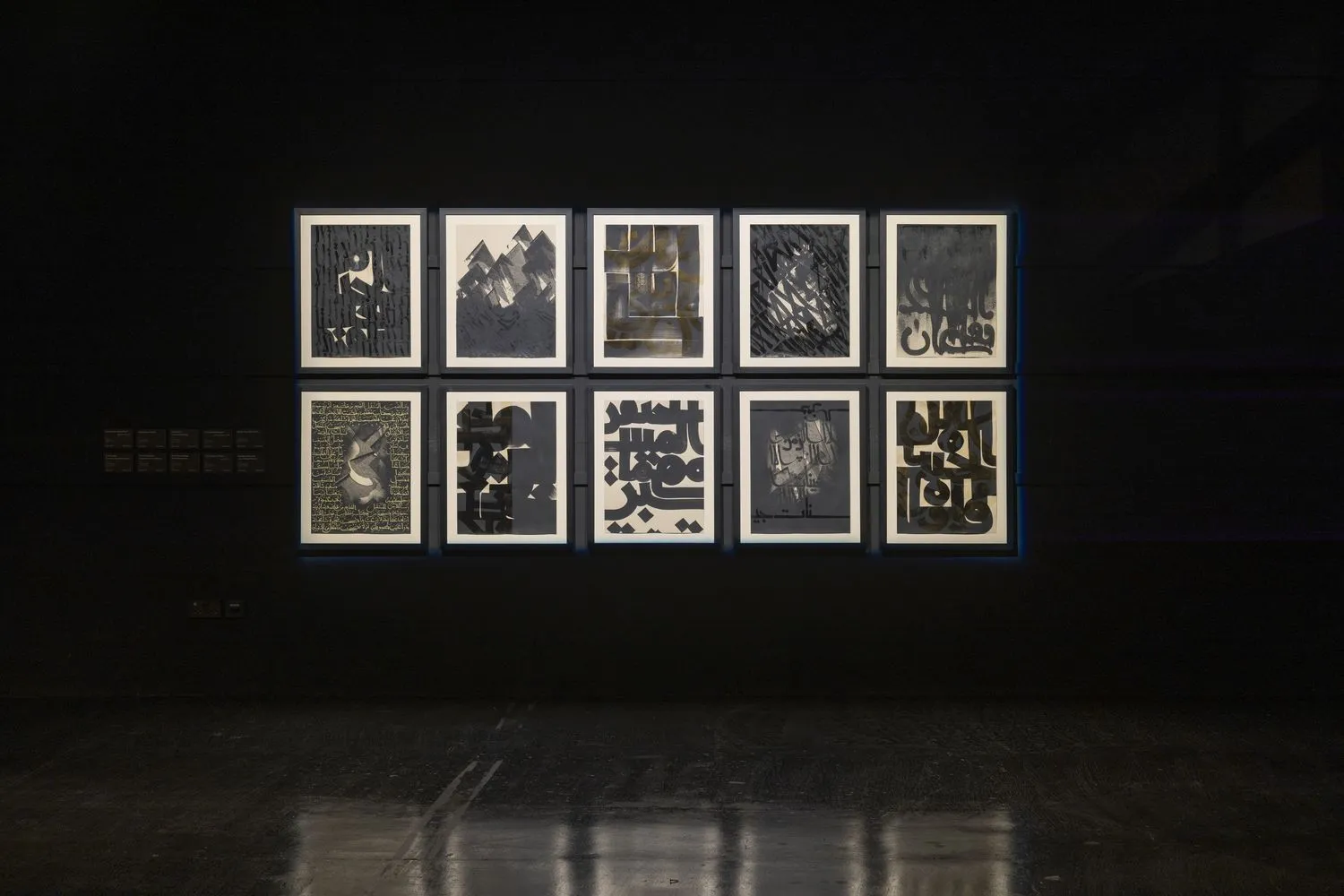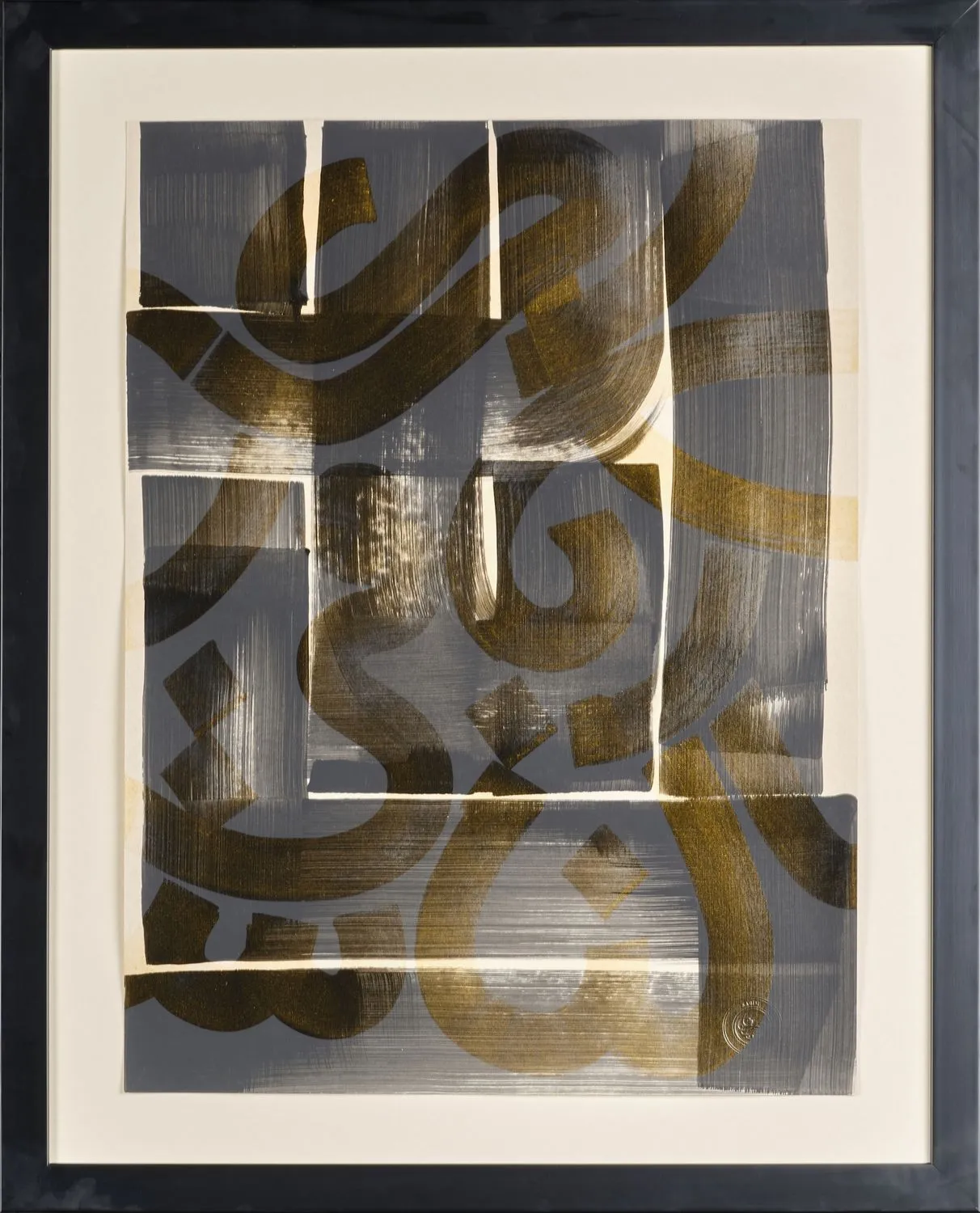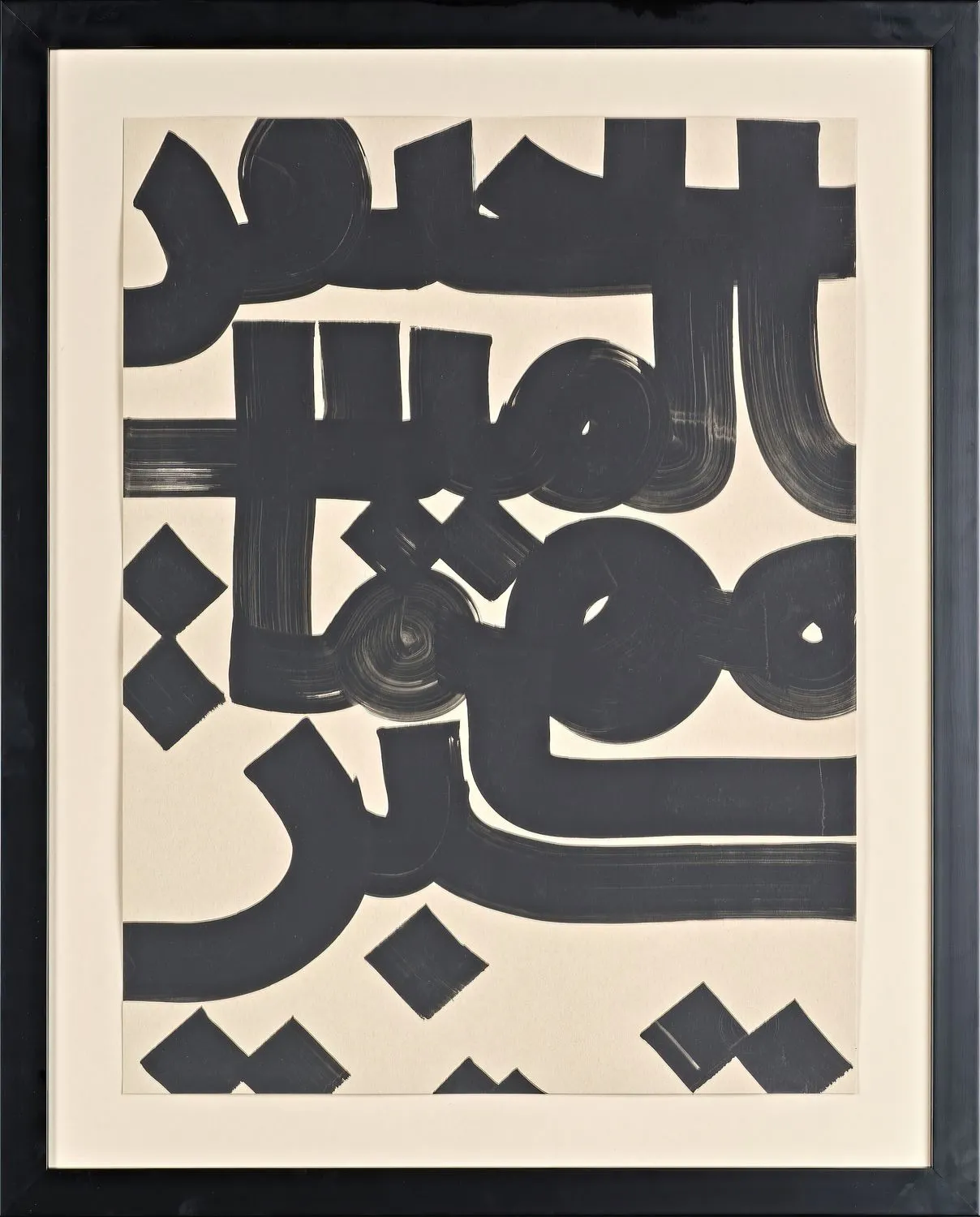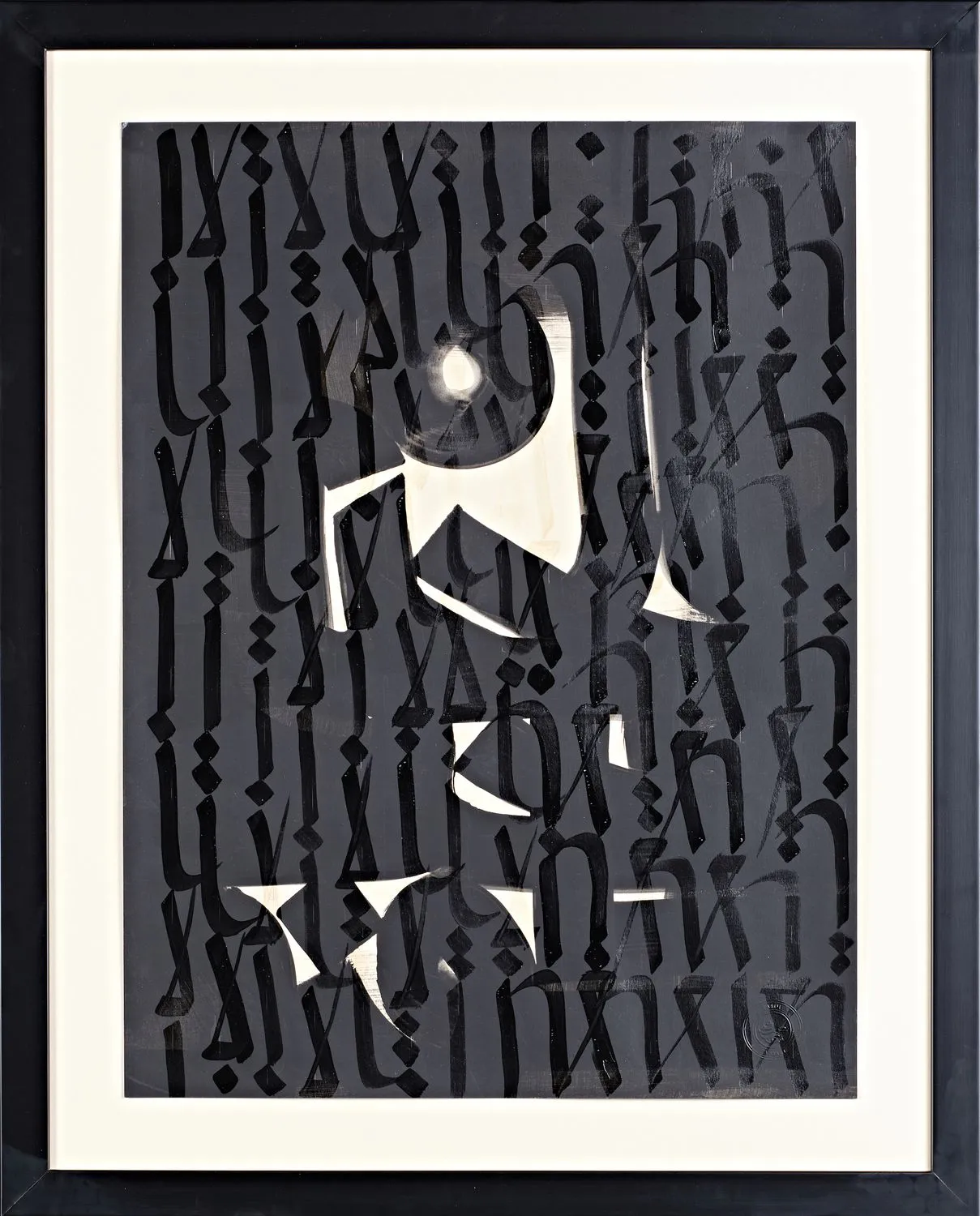 Karim Jabbari, The Place We Love to Return To, Dubai, 2025. 60 x 80 cm, HP Matte Litho-realistic Paper 269 gsm Edition of 5 + 1 AP. Courtesy of Inloco.
Karim Jabbari, The Place We Love to Return To, Dubai, 2025. 60 x 80 cm, HP Matte Litho-realistic Paper 269 gsm Edition of 5 + 1 AP. Courtesy of Inloco. In a city defined by constant transformation—where skyscrapers rise overnight and deserts give way to gleaming grids of glass and steel—Dubai stands as a vivid paradox of rapid modernity and deep-rooted tradition. Amidst this whirlwind of development and spectacle, moments of stillness and cultural memory can feel elusive. Yet it is precisely here that Karim Jabbari's exhibition Vertical Horizon / 361 Degrees at Inloco Gallery finds potent resonance.
Presented in a space dedicated to experimental, site-sensitive work, Jabbari's practice is both reclamation and celebration—a luminous dialogue between ancient Arabic calligraphy and contemporary urban life. By blending language with spatial intervention, he invites viewers to slow down and remember. His engagement with light, script, and public space transforms calligraphy from ornament into a beacon, tracing a cultural spirit often eclipsed by the city's relentless pace.
For Jabbari, Arabic script is a conduit that carries not only linguistic meaning but also a layered symbolism rooted in centuries of artistic and religious history. His work frequently transforms public spaces—walls, facades, and streets—into arenas where text and light converge, inviting passersby to pause, reflect, and engage with the complex interplay of language and environment.
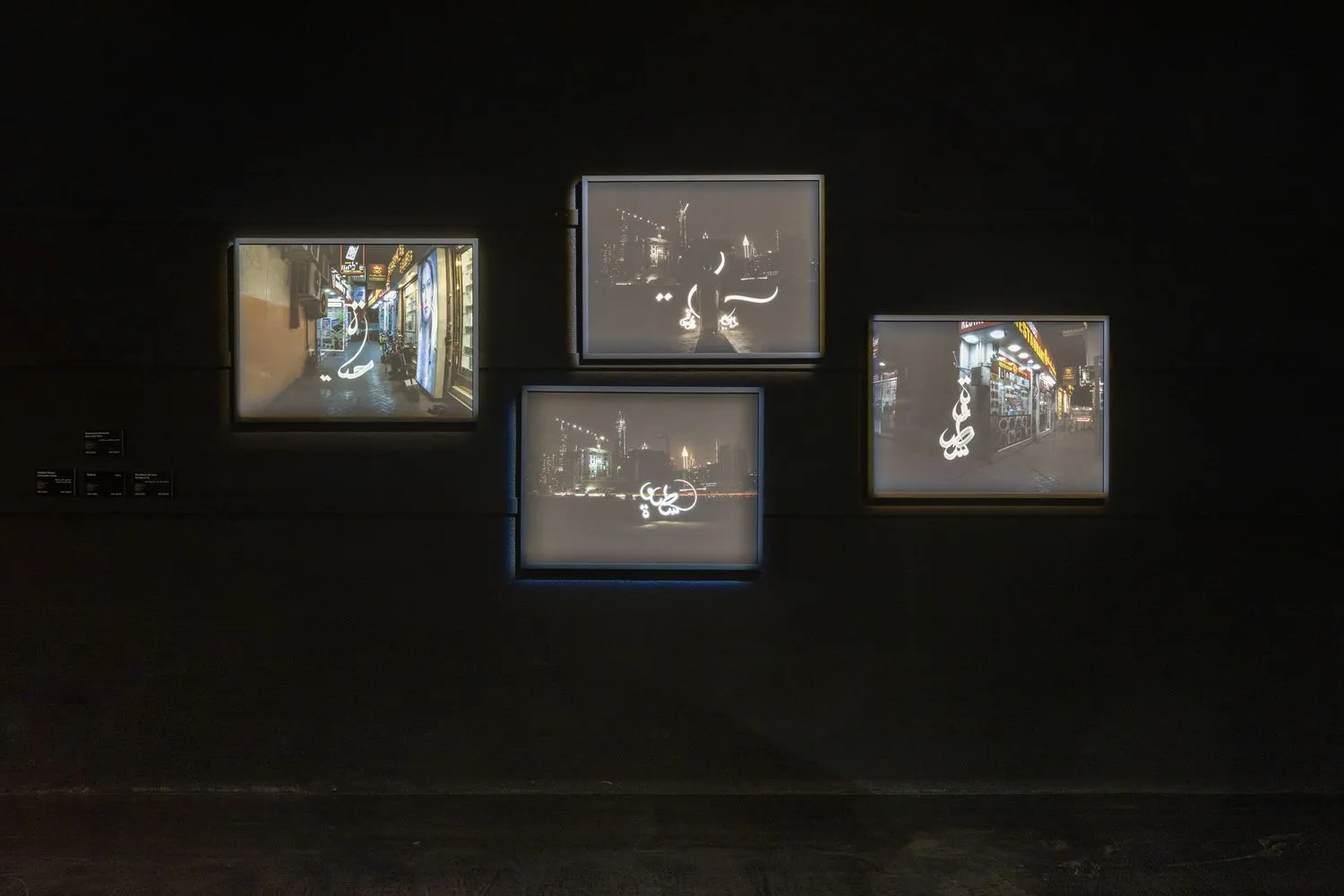
Building on this dialogue between tradition and space, the exhibition's title, Vertical Horizon / 361 Degrees, encapsulates the layered conceptual underpinnings of the project. For Jabbari, the phrase "vertical horizon" evokes a shift in how we navigate the world—no longer bound to linear or flat perspectives, but attuned to dimensions that rise, expand, and loop back through memory, language, and space. Meanwhile, "361 degrees" suggests going one step beyond the full circle—a poetic gesture toward transcending limits, defying closure, and embracing multiplicity. This title reflects Jabbari's drive to push Arabic calligraphy beyond its traditional forms, allowing it to exist not only as text or ornament but as a living, luminous vehicle for connection across time and place.
The exhibition marks the final chapter of a three-part project that began with a collaborative art intervention in Al Satwa, a historic Dubai neighborhood facing rapid redevelopment. There, amid fading alleys and shuttered shops, Jabbari worked with Khalil Abdulwahid, an Emirati artist native to Satwa, using light calligraphy to capture the fragile threads of a community and its disappearing way of life. A powerful image from this phase shows Khalil seated on a cleared plot where he once played—now erased by new construction—symbolizing the loss of shared histories. Jabbari explains his connection to Satwa:
It's about those alleys, the small shops, the everyday encounters that still hold the heartbeat of the place. Working in Al Satwa, I wanted to capture something fragile — memories, stories, a way of life that is on the verge of disappearing under the pressure of 'New Dubai.'
Throughout Al Satwa, Jabbari's calligraphy lights up walls and alleyways with words like "life," evoking the vibrant humanity found in the small shops and everyday encounters that remain. These traces of tradition stand in stark contrast to the new high-rises that isolate residents from each other and from the earth itself, severing essential connections with nature and community. The work mourns this loss but also insists on the persistence of memory and identity beneath the surface.
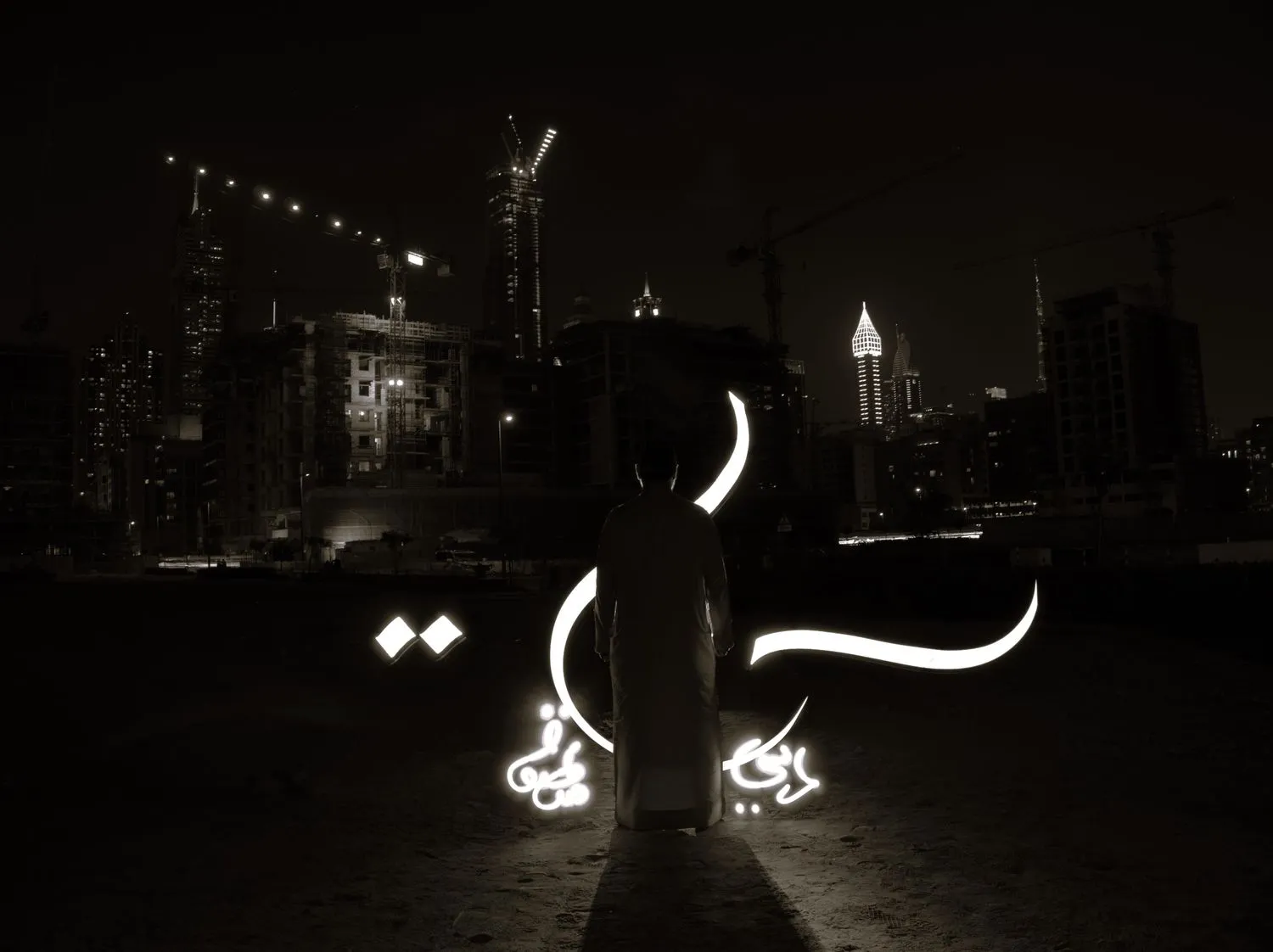
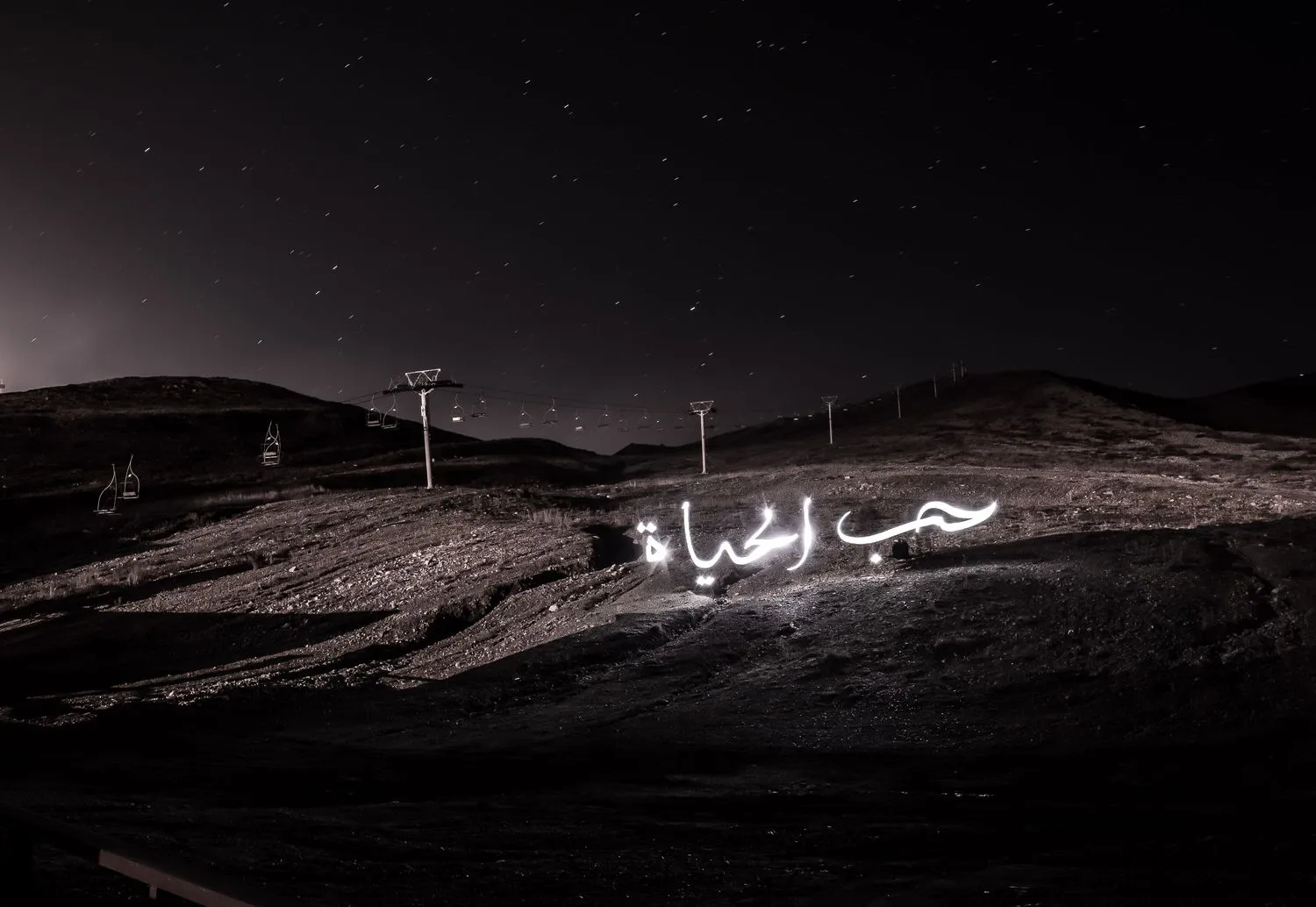
Using movement, reflection, and long-exposure photography, Jabbari shapes calligraphy into a living, fleeting medium—dynamic like memory itself. Alongside his light performances, his canvases feature gold and silver leaf—metals he values for their symbolic, timeless qualities—set against deep black backgrounds. Other works use shadows and reflections to reveal shifting details as the viewer's perspective and light change. Together, these approaches make calligraphy a living visual experience, honoring tradition while inviting continual rediscovery.
Creating these light works is as much performance as making. Jabbari moves deliberately, manipulating light sources to form transient calligraphic shapes, creating ephemeral scripts that turn calligraphy from static text into a dynamic event. Using tools like programmable LEDs and kinetic installations, he bridges centuries-old tradition with new technology, crafting a fluid dialogue between past and future.
These pieces have traveled and evolved across diverse locations—the mountains of wartime Lebanon, Casablanca, Beirut’s rugged landscapes, and Australia. Each site-specific work links local histories with universal human experience, inviting viewers to “peel back the layers” and discover hidden meaning. One work particularly dear to Jabbari was created at a Lebanese lighthouse, where during a stormy night he performed live light calligraphy. Climbing the rusty ladder stirred childhood memories of loneliness, as he recalls. "That loneliness stayed with me, but I learned to create a bubble—a space where I protect myself and those I love from the noise of the world." This experience exemplifies calligraphy as a vessel of memory and resilience—an emotional sanctuary and symbol of hope central to Jabbari's practice.
This personal engagement with memory and tradition connects to a broader philosophy. Central is the wisdom of Ibn Khaldun, the 16th-century Tunisian scholar whose insights on society and history deeply resonate in Jabbari’s work. The idea that "the present resembles the future like water resembles water" underscores time's cyclical nature and the patterns of rise and fall shaped by human resilience and folly. Inscribing this notion in water and light—ephemeral, flowing, reflective—Jabbari invites reflection on continuity and change, urging viewers to stay connected to their roots.
What Khaldun is talking about is exactly what we often say—that history repeats itself. The 'genes' of time stay the same; only the outer shell changes. When you analyze how empires rise and fall, it's always the same mistakes: greed, power struggles, or similar flaws. The external forms shift, but the core patterns remain. So, understanding your present is crucial—open your eyes so you don't fall into the traps of the future.


Karim Jabbari's connection to Arabic calligraphy is deeply personal. As a child in Tunisia, his family lived under house arrest—his father imprisoned as a political opponent. In this forced isolation, Jabbari found an unlikely refuge in his father's old books — ancient, leather-bound volumes he wasn't previously allowed to touch. "When I opened them, I could smell my father in the old paper, I saw his smile... It was an escape for me," he recalls. He began copying the intricate scripts, estimated to be over 400 years old, not knowing then that this practice — born from boredom, grief, and a need for connection — would come to define his life.
At boarding school, calligraphy suddenly placed him at the center of attention—classmates lining up for him to write their names, giving him, as he recalls, a sense that he "existed." Years later, after escaping Tunisia on a tourist visa and resettling in Canada, the ink remained his anchor—a way, he says, "to tap into home, into who I am." Now, his mission is to honor this tradition while renewing its form for the present and future.
I want to give back to calligraphy. Calligraphy loved me so much, and it gave me a childhood. It defined who I am at a certain phase in my life.
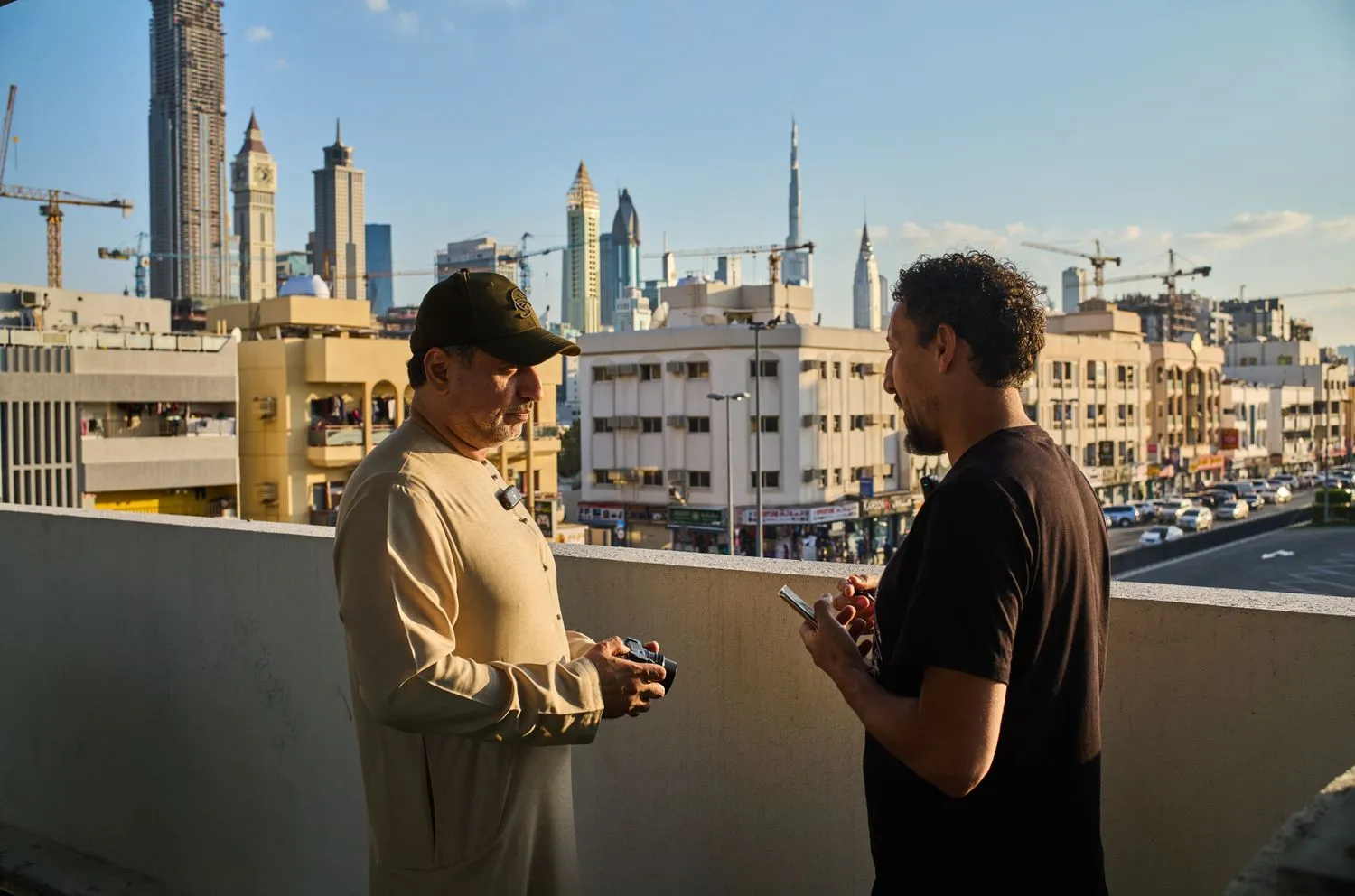
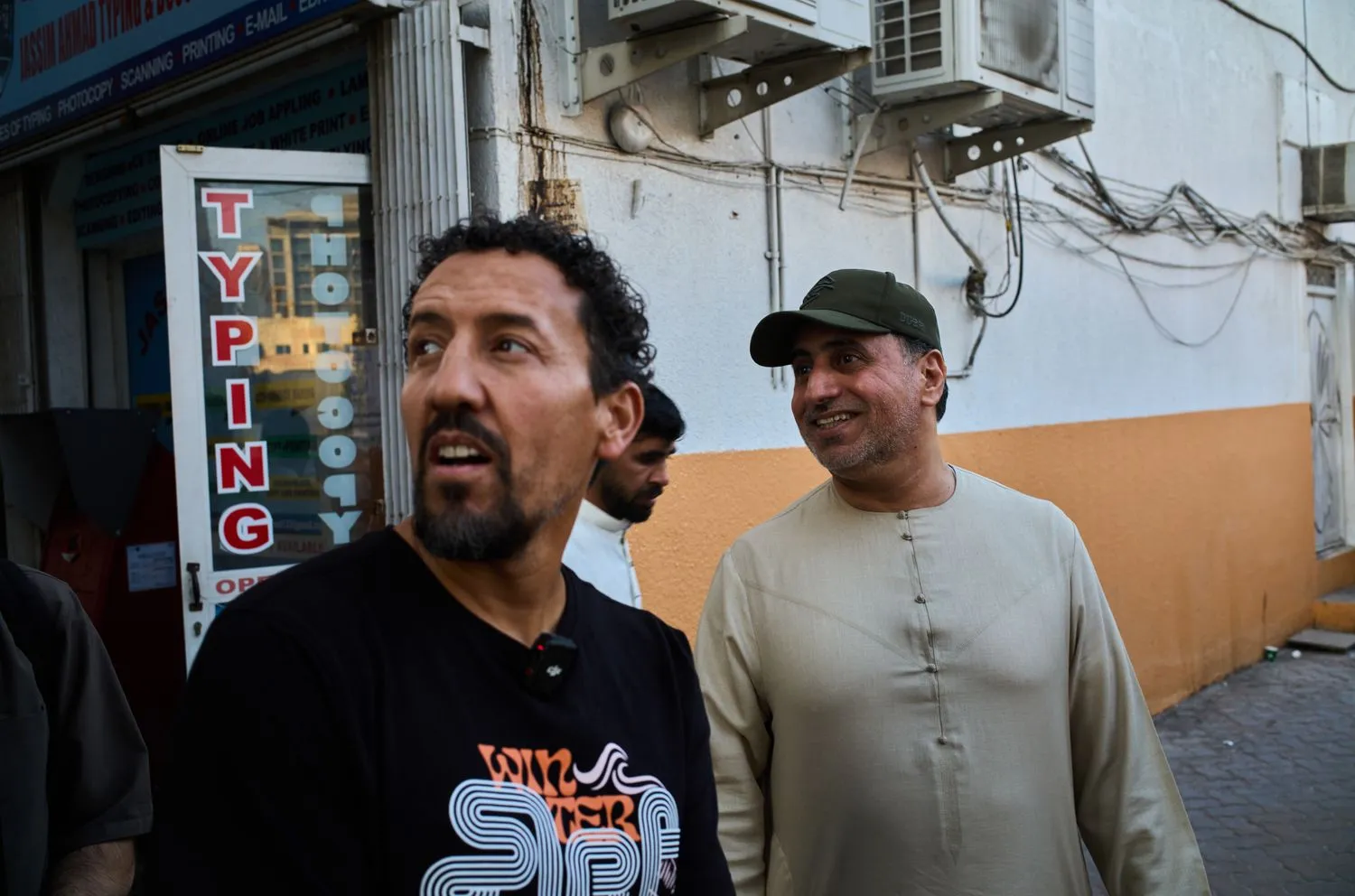
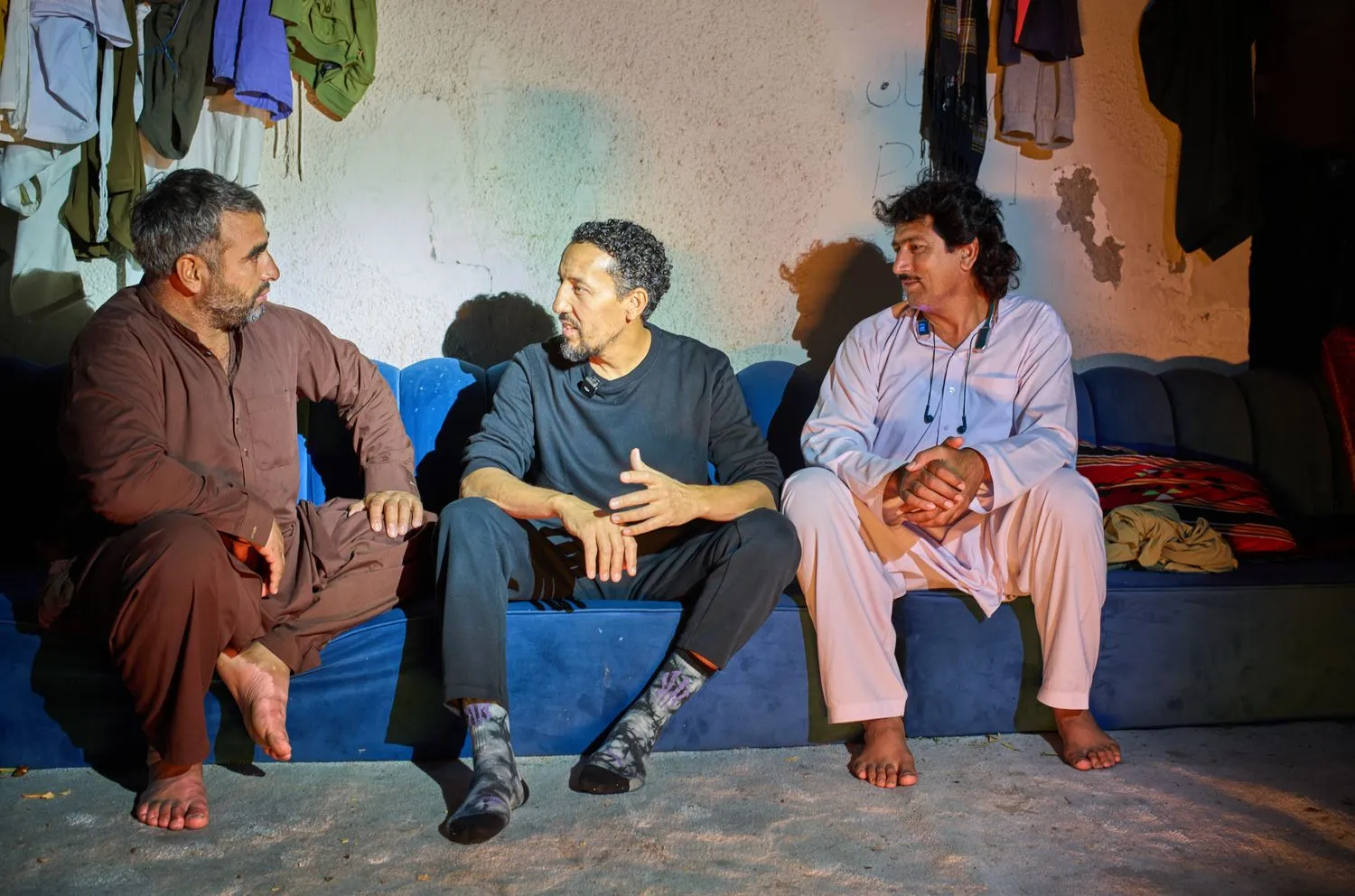
At its core, Jabbari's work invites audiences to rise above distraction and superficial consumption, encouraging deeper engagement with life, culture, and community. His commitment extends beyond the artwork itself into active social engagement, approaching public art not as decoration, but as a catalyst for connection and shared meaning. Working in neighborhoods often marked by industrial architecture and multicultural populations, he creates points of interaction that weave together personal, collective, and historical narratives.
Central to this is his passion for transferring knowledge, continuously engaging in workshops with youth and communities. "Knowledge is part of me and I'm very generous with information. I don't hold back, I don't gatekeep," he explains. From initiating Toward the Light, the first street art festival in Kasserine, Tunisia—his hometown and one of North Africa's poorest cities—to creating internationally recognized public art projects, Jabbari sees teaching as another vital way to celebrate and sustain the beauty of calligraphy. He embraces his role as an educator, nurturing a growing community of artists inspired by his pioneering work in light calligraphy, a term he helped popularize.

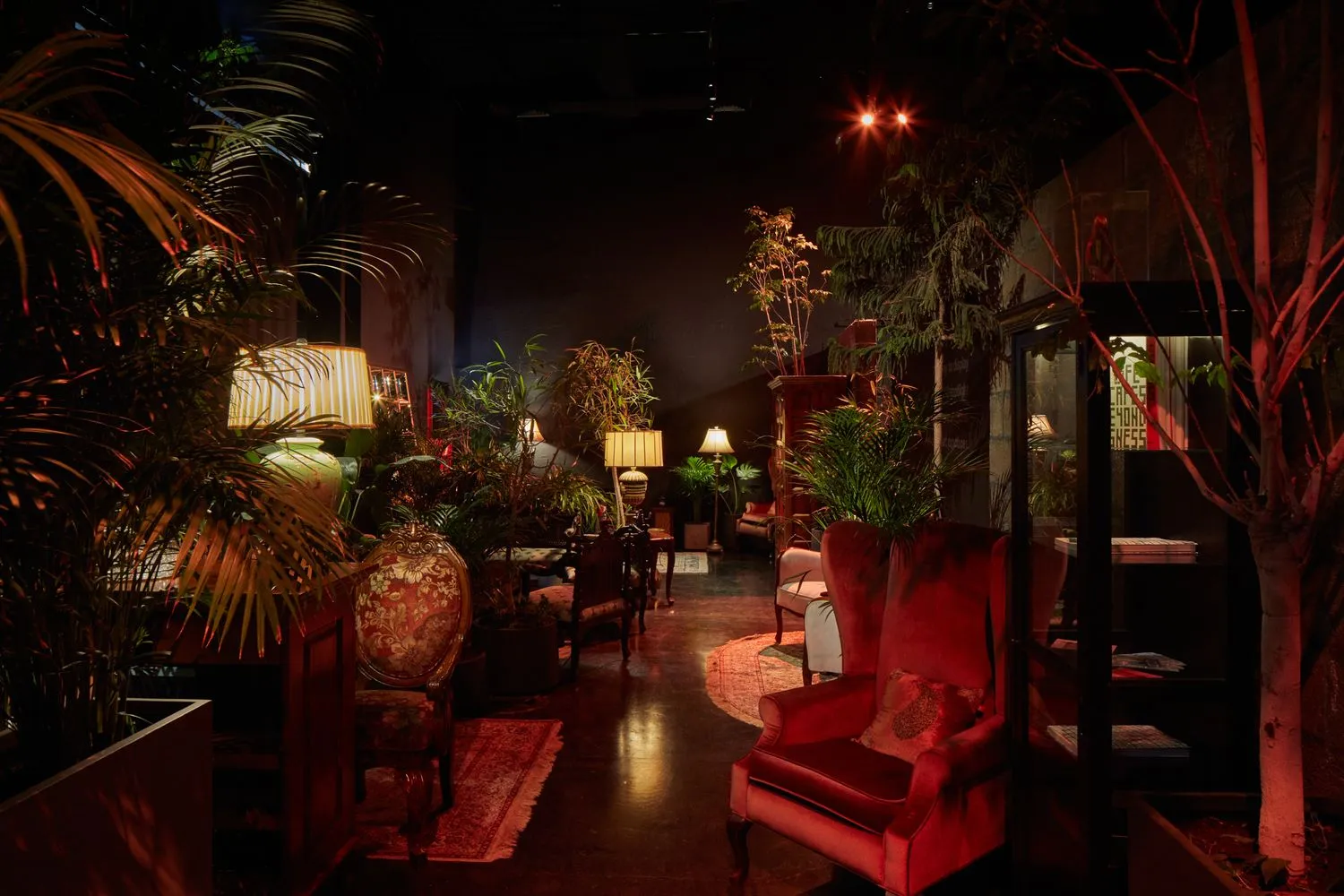

Wrapping up, Jabbari reflects on Dubai's street art scene as a "curated" yet growing landscape, becoming part of the urban fabric, a lasting influence on the city and its people. "There are efforts, opportunities, and financial means being put into enhancing that scene," he says, noting how other cities in the region are beginning to take inspiration. While he acknowledges that Dubai doesn't rely on public art to attract people, since it's already a global destination — he believes it can only benefit from the identity that public art and street culture can foster.
Reflecting on his own trajectory, he's seen the city evolve since his first mural in 2012, and now, with his seventh solo exhibition taking place here, he sees it as a full-circle moment. "I'm very selective now," he adds. "I don't paint just to fill a wall. If I feel I can add something meaningful to a space, I’ll do it. Otherwise, I have other ways to contribute." For him, murals are like seeds—left behind to grow, to inspire, to become part of the space and the people who pass through it every day.
Inloco Gallery departs from the conventional white cube, embracing a more theatrical and adaptable model shaped by the spirit of its exhibiting artists. As Dubai's only dedicated street art platform, it operates at the intersection of grassroots expression and institutional recognition. Its gold-painted industrial container—used as a recurring display—underscores the ephemeral nature of urban art while acknowledging its evolving place within formal art structures. In a city marked by constant reinvention, the gallery facilitates a space where street culture and public discourse can meaningfully converge.
The exhibitionVertical Horizon / 361 Degrees will be on view at Inloco Gallery in Dubai until May 30th, 2025.
